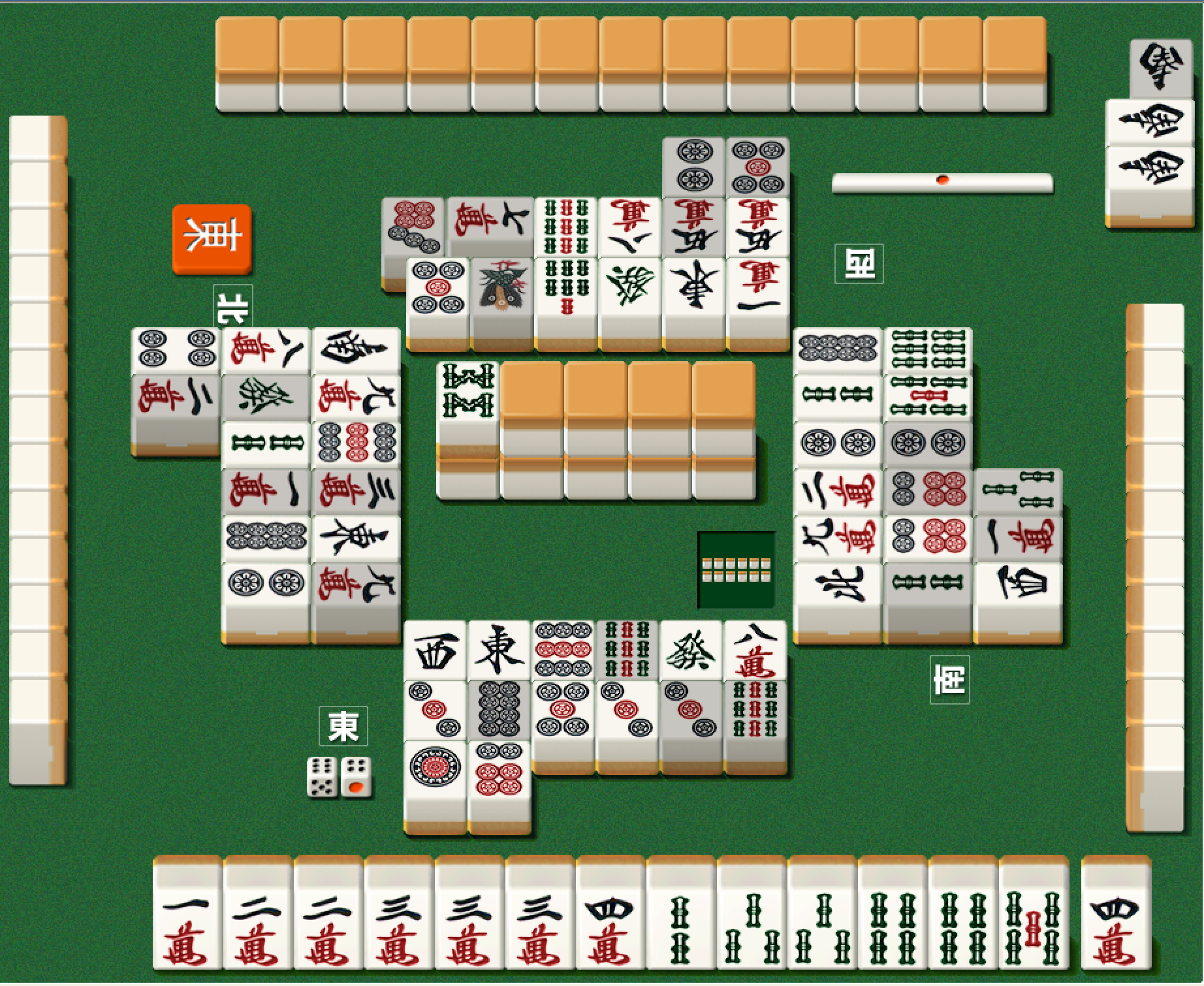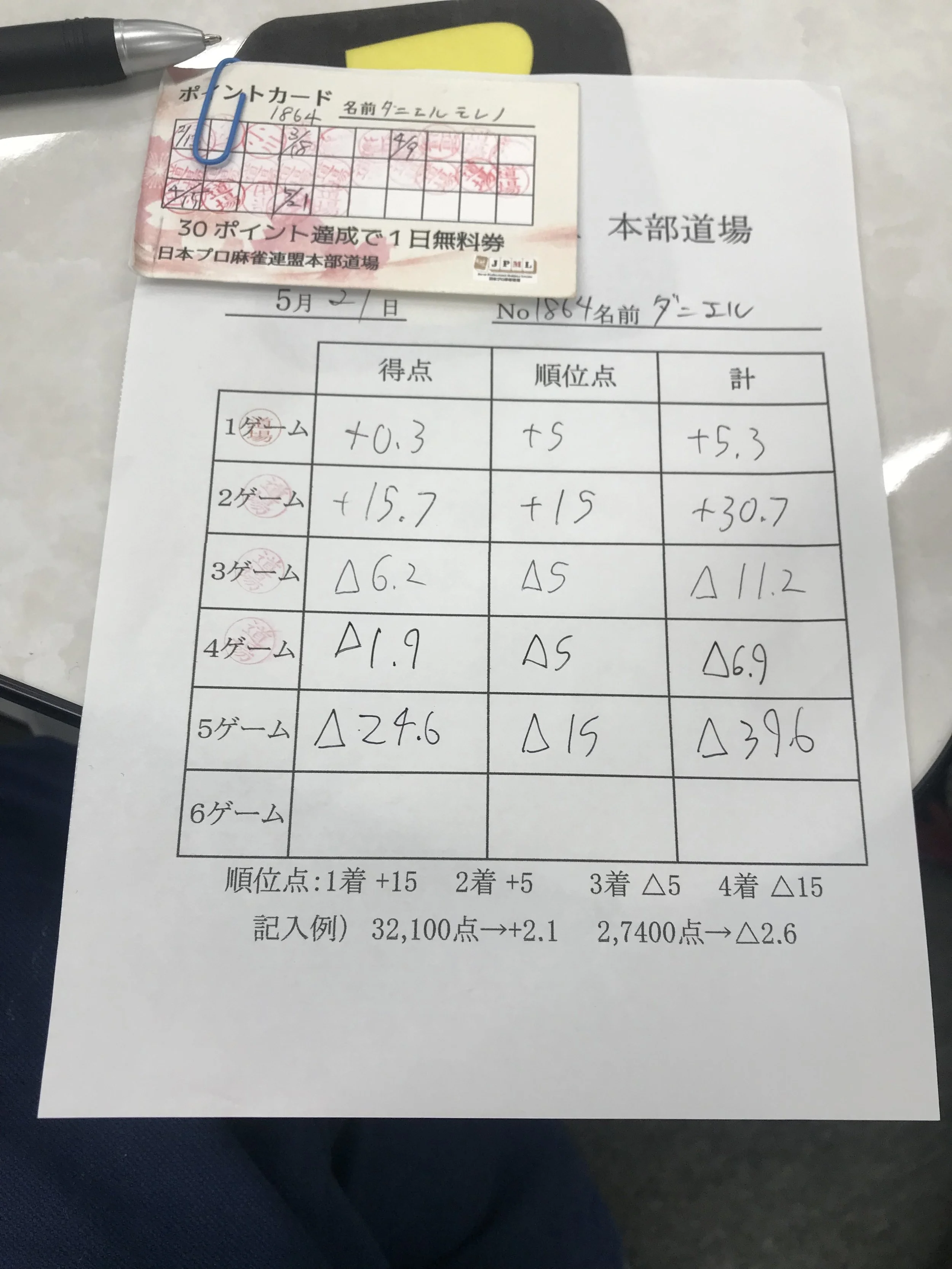Kabe Advanced
Yep, I’m still banging on about kabe. It’s really been a focus of my mahjong studies recently.
Whenever you learn a strategy, you need to know it inside and out so when you glance over the table, you can see it immediately. It needs to be second nature because riichi is too fast a game to ask for a timeout while you study the discards.
That’s why I’ve spent so much time focusing on kabe. And finally it paid off. It paid off in a way I hadn’t anticipated but because I’d spent so much time studying and checking hand histories, the pieces of the puzzle all suddenly fit.
I couldn’t take a photo of the situation unfortunately because I was in the JPML dojo, so I’ll try to describe it as best I can.
East player declares riichi in the mid-part of the game on a (7). Everyone starts to fold, as you would expect from the playstyle in Japan. Then, the player opposite throws the (8), which considering the discards on the table was dangerous.
Immediately, I’m alerted to two potential options. (A) The player is ready (B) The player has something worth pushing.
Both (A) and (B) seem unlikely because the player is a good way ahead of everyone else, and doesn’t have any value in pushing anything at this point against a dealer riichi.
Then it occurs to me… They can see the other three (7) because they have them! This realization opens up a greater understanding to me of the tiles in play on that suit and creates information I can use to dodge this dealer riichi myself. For example, the (9) is now looking a whole lot safer. For more info on kabe suji, check here.
Of course, I couldn’t know but I could have a strong suspicion. In the end, the game ran to a draw, the player opposite me opens his hand and lo and behold, a concealed pon of (7).
Usual disclaimer that all of this theory and strategy is a very blunt tool and what works once won’t always work but when it does come together, it does feel really good. Perhaps I’ll observe it in a game that I can take a photo of or screen cap for a way better illustration and context.


